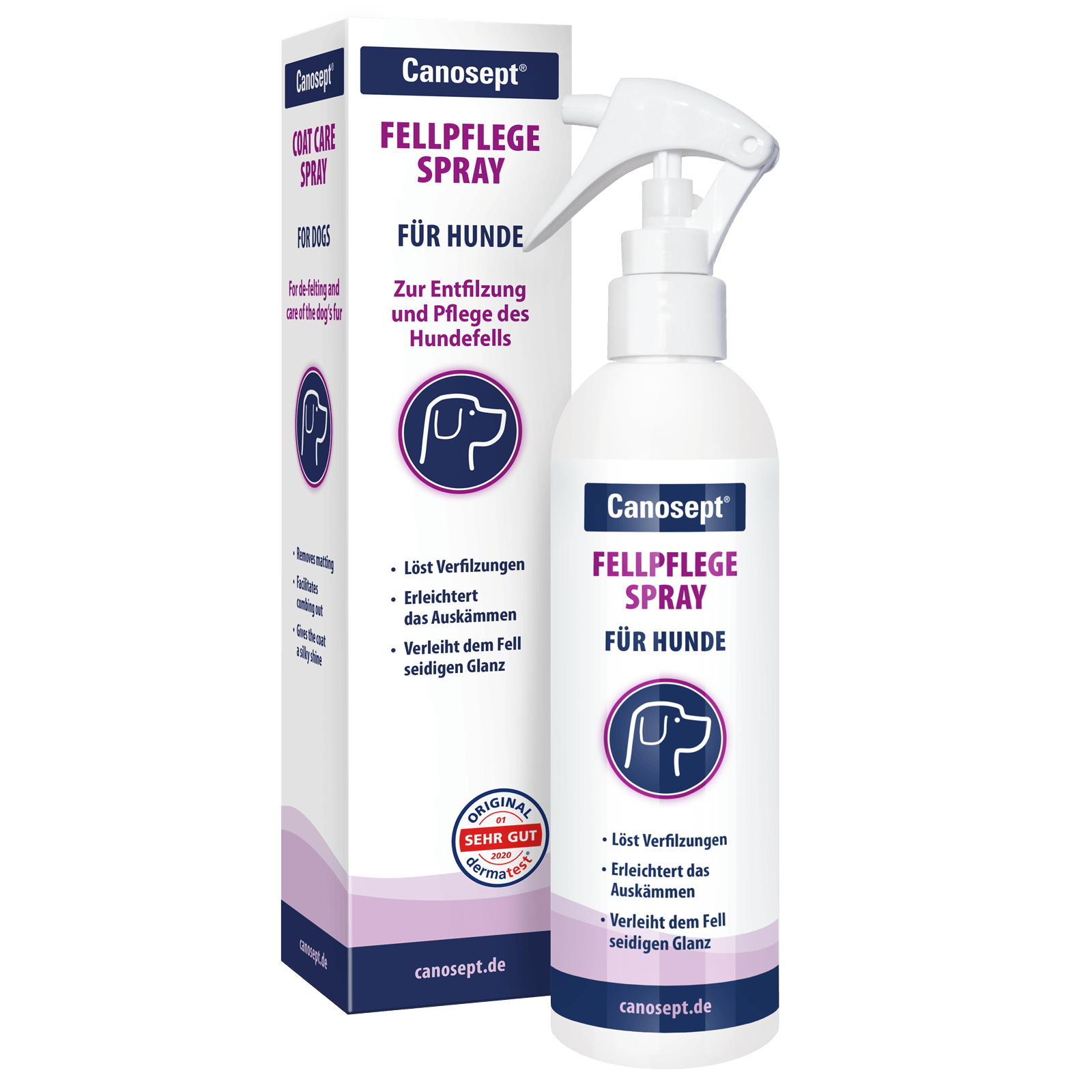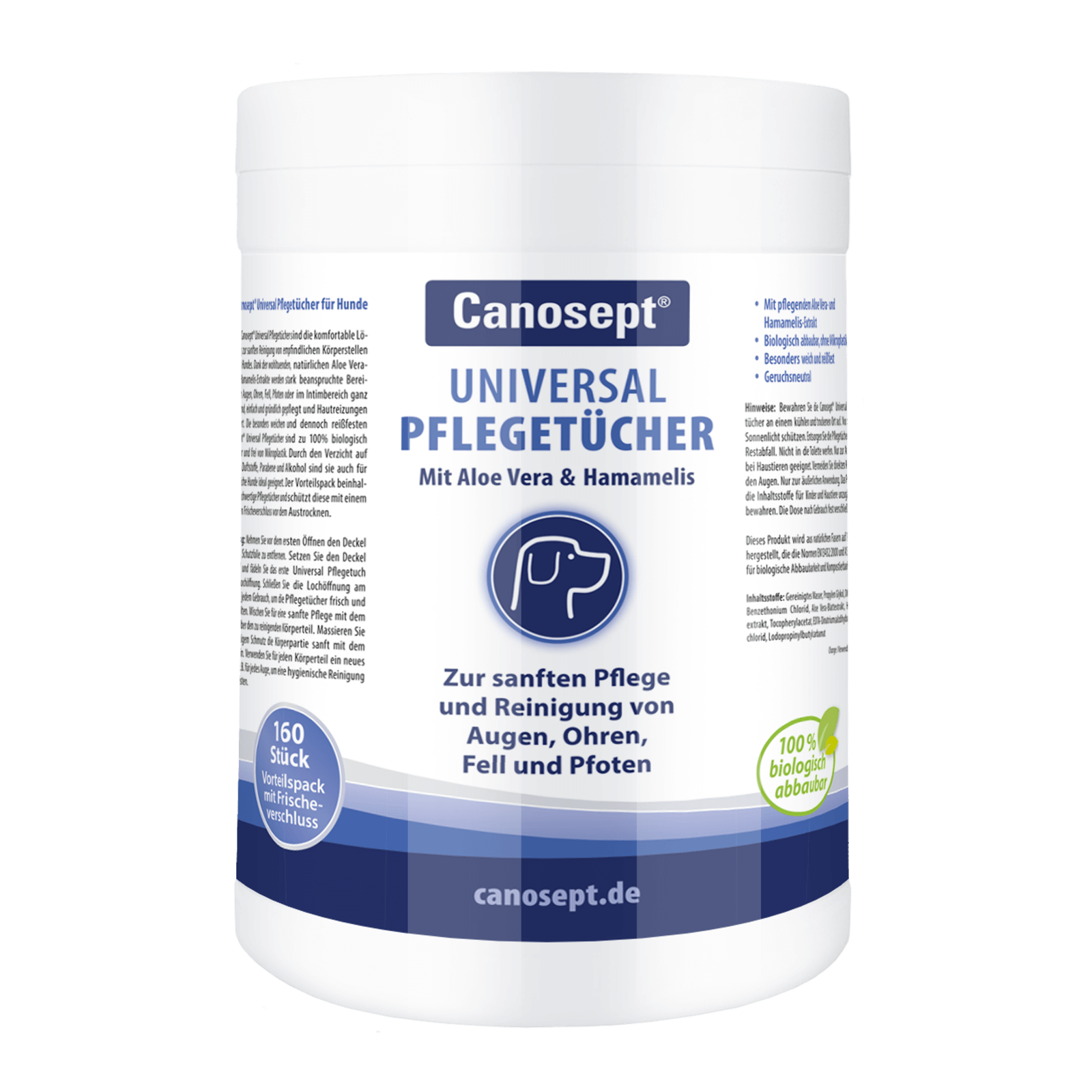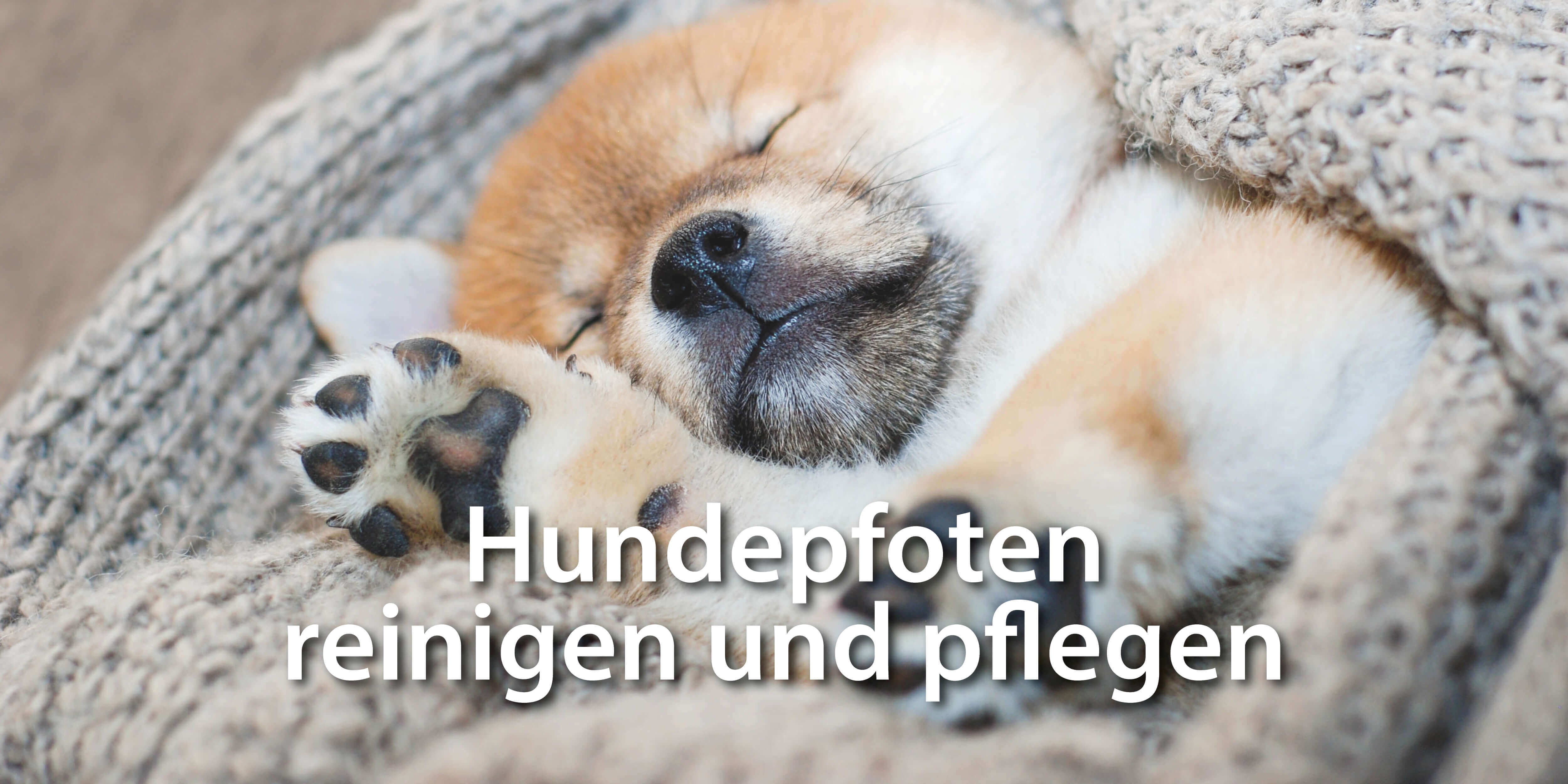- Dog hair – a brief explanation
- What is shedding in dogs?
- When does a dog’s coat change?
- First coat change in dogs - hormones decide when
- How long does it take for a dog to shed its fur?
- Frequent behavioral changes during shedding
- Dog's coat change – this helps now
- Hairy facts – the most important things for your dog’s coat change at a glance

Dog hair – a brief explanation
In most dog breeds, the entire body is covered in fur, except for the nose and paw pads.
A distinction is made between the outer coat and the woolly hair, also known as the undercoat. The outer coat determines the dog's color and appearance. The undercoat protects your dog from cold or UV rays, depending on the season.
Depending on the breed, the number of hairs per square centimeter ranges from 1,000 to 9,000 individual hairs. The individual hairs grow in small tufts from funnels. There are two to three secondary hairs per main hair.
Under the skin, sebaceous glands supply each individual hair with oils and minerals. Another function of sebum is to protect the dog from excessive moisture.
The different coat types
| Coat type | Dog breeds (examples) |
|---|---|
| Short coat with little or no undercoat | Great Dane, Dalmatian |
| Short coat with undercoat | Rottweiler, Labrador Retriever |
| Long hair with little or no undercoat | poodle |
| Long hair with undercoat | Husky, Golden Retriever |
| Wire-haired dogs | Wire-haired Dachshund, Schnauzer |
What is shedding in dogs?
A dog's coat change is a natural and healthy process . It's necessary for your dog to adapt to the changing seasons. During the coat change, your dog only loses its undercoat. It doesn't lose its longer outer coat. This hair falls out at its usual rate every few weeks.
How much hair loss is normal?
There's no one-size-fits-all answer to the question of how much shedding is normal. How much a dog sheds during the shedding season or in general varies from individual to individual. This is where you, as a dog parent, come in. Watch for the following symptoms in connection with noticeable hair loss:
- itching
- Bald spots
- Skin irritation
- Formation of dandruff
- Dull coat
If these symptoms occur, consult your veterinarian. They can determine whether an illness or parasite infestation is present. A food allergy or intolerance could also be the cause.

Is it normal for my dog to lose more hair during the shedding process?
Yes! However, if excessive hair loss or bald patches occur, seek professional advice from your veterinarian.When does a dog’s coat change?
The coat change usually occurs twice a year . However, there are also breeds, such as the Poodle, Yorkshire Terrier, or Bearded Collie, that do not undergo the traditional coat change.
Dog's coat change: preparing for winter
In autumn, the days get shorter and, above all, colder. Not only do we humans have to dress warmer, but your dog also begins to build up its winter coat ( Source: Veterinary Medicine Portal ). This requires a lot of energy, as shedding is a lengthy process.
The winter coat has a denser undercoat than the summer coat, which lies as soft, thin wool beneath the outer coat. It provides excellent protection and insulation for your dog against cold and wet weather.
Dog's coat change: preparing for summer
The coat change in spring is usually heavier than in autumn. This is because your dog needs to shed its thick undercoat to cope with the warmer temperatures. Brushing is particularly effective during this time, when the winter coat gives way to the summer coat.
Permanent coat change due to climate change
Temperatures exceeding 10 degrees Celsius in the winter months and shifting seasons – climate change is also taking its toll on dogs. As a result, the periodic, twice-yearly coat change is barely noticeable. Many dogs now shed year-round, which places a tremendous strain on their metabolism and immune system.
The fluctuating temperatures disrupt the body's natural coat change and disrupt the natural process of shedding. This can lead to dogs sporting their winter coats even in summer.
In which months do dogs shed the most?
Dogs typically shed the most in April, May, September, and October. However, due to climate change, the shedding period is becoming increasingly broader.

First coat change in dogs - hormones decide when
The first coat change is associated with the onset of puberty and is therefore different for every dog. The change from the soft, cuddly baby coat occurs in many dogs between the ages of 3 and 6 months . At this age, puppies shed their soft, cuddly fur and develop their thicker, stiffer adult coat. This process can take a few weeks or a few months.
Depending on the breed, this coat change can lead to drastic changes. For example, it's normal for the coat to look shaggier or even change color. In other breeds, especially short-haired dogs, you'll barely notice the coat change. Yet, it still occurs in these breeds.
Our tip: Get your dog used to brushing while he's still a puppy. This will make grooming more pleasant and stress-free in the future. More on the topic of dog grooming .
How long does it take for a dog to shed its fur?
The intensity and duration depend on each individual dog. Not only breed, age, and gender play a role, but also health status.
The shedding period ranges from three to eight weeks . The shedding period is shortest in dogs with very bristly and robust hair.
How long does it usually take for dogs to shed their fur?
The duration of the coat change varies greatly from dog to dog and depends on many factors. However, it usually lasts about six to eight weeks.
Frequent behavioral changes during shedding
Itching and scratching
Especially during shedding, many dogs, especially breeds with a very dense undercoat, are prone to itching all over their bodies. The shed hairs get stuck in the fur, causing an unpleasant, prickly sensation.
Can shedding cause skin problems in dogs?
A dog's coat change can cause itching. If skin irritation and dandruff also occur, consult your veterinarian to rule out any other medical conditions. A skin care spray can also relieve the itching.
Fatigue and need for sleep
Your dog's metabolism is working at peak performance during the shedding period. This consumes a lot of energy. During this time, your dog may therefore have an increased need for sleep.
Dog's coat change – this helps now
Dog parents can help their dog remove loose and dead hair, relieve itching, and prevent other causes that lead to hair loss.

Tip 1: Brushing relieves itching
Daily brushing during the shedding season will relieve your dog's itching and help them shed more quickly. Regular brushing also has the positive side effect of stimulating blood circulation and preventing dry skin and dandruff.
And the best part is, brushing can also strengthen your bond with your dog. Canosept Coat Care Spray is ideal for grooming and de-matting their coat.
In addition, you can relieve your dog's itching with the help of Canosept skin care spray , for example.
How often should you brush your dog during shedding?
During the shedding period, it's important to brush your dog's hair daily to remove loose and dead hair. This can help relieve itching and shorten the shedding period.
What type of brush is best for shedding?
To best support your dog during the coat change, brush out the undercoat. Special undercoat brushes are ideal for this.
Tip 2: The right food promotes health
For healthy skin and a shiny coat, your dog needs plenty of nutrients. These include protein and vitamins, as well as essential fatty acids, trace elements, and minerals. A deficiency in essential nutrients can affect your dog's health. This can manifest itself in symptoms such as hair loss.
Support your dog not only during the shedding season with balanced dog food. This will not only help control shedding and dry skin, but also promote your dog's overall health. The visible sign is a smooth and shiny coat.
Tip 3: Oil for a shiny coat
You can also support your dog during the shedding period by adding high-quality oils to their food. Oils with a high content of unsaturated fatty acids and an optimal ratio of omega-3 to omega-6 fatty acids are ideal for this. Here are a few suggestions:
- Hemp oil
- linseed oil
- Salmon oil
- Algae oil
- Evening primrose oil
Tip 4: Prevent dehydration by drinking enough fresh water
Dehydration in dogs leads to dry skin. Dry skin, in turn, is a cause of excessive hair loss. Therefore, always make sure your dog has plenty of fresh water available, especially during shedding.

Hairy facts – the most important things for your dog’s coat change at a glance
- As a rule, the coat change takes place once in spring and once in autumn
- Duration and intensity are individual
- Daily brushing stimulates the blood circulation of the skin, thus supporting the change of coat and counteracting the itching often associated with the change of coat
- The Canosept skin care spray regenerates and cares for irritated and itchy skin
- With enough fresh water, balanced food and high-quality oils, you can support your dog during the coat change








